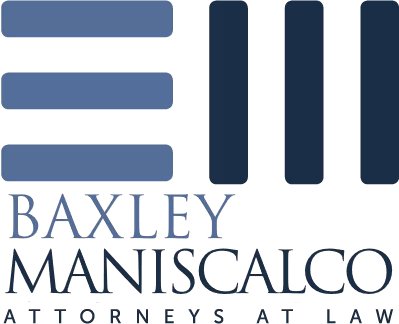
Retirement accounts often represent a person’s largest asset outside their home, yet many IRA owners make beneficiary decisions without fully understanding the consequences.
Naming a trust as your IRA beneficiary can provide powerful protections and control mechanisms, but it also introduces complexity and potential tax implications that could significantly impact your heirs.
The choice between naming individuals directly or using a trust structure shapes how your retirement savings will support your loved ones for years to come.
Understanding Trust Beneficiaries for IRAs
When you name a trust as your IRA beneficiary, the trust becomes the legal recipient of your retirement account assets upon your death.
This arrangement differs fundamentally from naming individuals directly, as the trust document governs how and when distributions occur to the ultimate beneficiaries.
Two primary types of trusts can serve as IRA beneficiaries:
- Conduit trusts: Require all IRA distributions to pass immediately through to trust beneficiaries.
- Accumulation trusts: Allow the trustee to retain IRA distributions within the trust for future distribution.
- See-through trusts: Meet specific IRS requirements to allow beneficiaries to use their life expectancies for distributions.
- Non-qualified trusts: Fail to meet IRS requirements and face accelerated distribution schedules.
The IRS imposes strict requirements for trusts to qualify for favorable distribution treatment.
Meeting these requirements ensures your beneficiaries can maximize the tax-deferred growth potential of inherited IRA assets while still receiving the protection and control benefits that trusts provide.
Advantages of Naming a Trust as IRA Beneficiary
Naming a trust as your IRA beneficiary offers several compelling benefits that direct beneficiary designations cannot provide.
These advantages become particularly valuable when beneficiaries need protection or when you want to control distributions beyond your lifetime.
Key benefits include:
- Creditor protection: Trust assets enjoy protection from beneficiaries’ creditors, lawsuits, and bankruptcy proceedings.
- Spendthrift provisions: Protects beneficiaries from their own poor financial decisions or spending habits.
- Minor children protection: Manages assets for children until they reach appropriate ages for inheritance.
- Special needs planning: Preserves government benefits for disabled beneficiaries while providing supplemental support.
- Remarriage protection: Ensures assets ultimately pass to your children rather than a surviving spouse’s new family.
These protections prove invaluable when beneficiaries face financial challenges, lack money management skills, or need assets preserved for specific purposes. The trust structure creates a legal barrier between inherited assets and various threats to beneficiaries’ financial security.

Disadvantages of Trust Beneficiaries
While trusts offer important protections, they also introduce complications and potential drawbacks that IRA owners must carefully consider.
These disadvantages can impact both the tax efficiency of inherited IRAs and the practical administration of your estate.
Significant drawbacks include:
- Complexity: Trust administration requires ongoing legal and tax compliance, increasing costs and administrative burden.
- Tax rates: Trusts reach the highest federal tax bracket at much lower income levels than individuals.
- Required distributions: Recent law changes eliminated “stretch” provisions for most trust beneficiaries.
- Professional fees: Trustee fees, tax preparation, and legal costs reduce assets available to beneficiaries.
- Inflexibility: Trust terms cannot adapt to changing circumstances without court intervention.
- IRS requirements: Failure to meet technical requirements can trigger adverse tax consequences.
The complexity of trust-owned IRAs often surprises families unprepared for ongoing administration requirements.
Professional guidance becomes essential to navigate distribution rules and avoid costly mistakes that could accelerate taxes or violate IRS regulations.
Tax Implications and Distribution Rules
Tax treatment represents one of the most critical considerations when naming a trust as your IRA beneficiary.
Recent legislative changes fundamentally altered how inherited IRAs must be distributed, affecting both individual and trust beneficiaries.
Current distribution rules require:
- 10-year rule: Most non-spouse beneficiaries must empty inherited IRAs within 10 years of the owner’s death.
- Annual distributions: Some beneficiaries must take required minimum distributions during the 10-year period.
- Trust tax rates: Accumulated distributions face trust tax rates unless distributed to beneficiaries.
- Eligible designated beneficiaries: Certain beneficiaries still qualify for life expectancy distributions.
- Conduit provisions: Immediate distribution requirements may conflict with trust protection goals.
Understanding these rules helps families structure trusts that balance tax efficiency with protection objectives. Poor planning can result in accelerated distributions, higher tax bills, and frustrated estate planning goals.

When Trust Beneficiaries Make Sense
Certain situations strongly favor naming a trust as your IRA beneficiary despite the added complexity.
Recognizing these scenarios helps IRA owners make informed decisions aligned with their family’s specific needs and circumstances.
Trusts prove particularly valuable when:
- Beneficiaries have creditor problems or face potential lawsuits;
- Minor children would inherit substantial IRA assets;
- Beneficiaries struggle with addiction, spending problems, or financial irresponsibility;
- Special needs beneficiaries require government benefit preservation;
- Second marriage situations require balancing spouse and children’s interests; and
- Charitable goals combine with family inheritance objectives.
These situations justify the additional complexity and cost of trust administration. The protections and control mechanisms trusts provide often outweigh the disadvantages when beneficiaries face specific challenges or vulnerabilities.
Frequently Asked Questions About Trust IRA Beneficiaries
Understanding the complexities of naming trusts as IRA beneficiaries raises numerous questions for those planning their estates.
Can a Trust Be Named as a Primary IRA Beneficiary?
Yes, trusts can serve as both primary and contingent IRA beneficiaries. The IRA custodian requires specific trust identification information, and the trust must exist at the time of designation. Some custodians have special requirements or forms for trust beneficiaries.
What Happens If My Trust Doesn’t Qualify Under IRS Rules?
Non-qualifying trusts face accelerated distribution requirements, typically requiring complete IRA distribution within five years of the owner’s death. This acceleration eliminates tax-deferred growth opportunities and may push beneficiaries into higher tax brackets.
How Do Required Minimum Distributions Work with Trust Beneficiaries?
Distribution requirements depend on trust type and beneficiary status. Conduit trusts must distribute all RMDs to beneficiaries immediately, while accumulation trusts can retain distributions. The 10-year rule applies to most trust beneficiaries unless they qualify as eligible designated beneficiaries.
Can I Change from a Trust to Individual Beneficiaries?
IRA owners can change beneficiaries at any time during their lifetime by submitting new beneficiary designation forms. After death, disclaimer provisions might allow trust beneficiaries to redirect assets, but options become limited.
Should All Retirement Accounts Name the Same Trust?
Not necessarily. Different retirement accounts may warrant different beneficiary strategies based on account size, beneficiary needs, and tax considerations. Some accounts might name individuals directly while others use trust structures.
These questions highlight the complexity of trust planning for retirement assets and the importance of professional guidance.
Navigate Your IRA Trust Planning with Professional Guidance
Choosing between individual and trust beneficiaries for your IRA requires careful analysis of your family’s unique circumstances, tax situation, and protection needs.
The stakes are too high to leave this decision to chance or outdated planning strategies.
Whether you’re concerned about protecting beneficiaries from creditors, managing assets for minor children, or minimizing tax impacts on your heirs, proper planning today shapes your family’s financial future tomorrow.
Our attorneys here at Baxley Maniscalco understand the intricate balance between protection and tax efficiency in retirement account planning.
We’ll analyze your specific situation, explain how current laws affect your options, and design a beneficiary strategy that aligns with your goals.
Contact us today to schedule a consultation about your IRA beneficiary planning and ensure your retirement assets provide maximum benefit to those you love.
Can't find what you're looking for? Search our site below.










